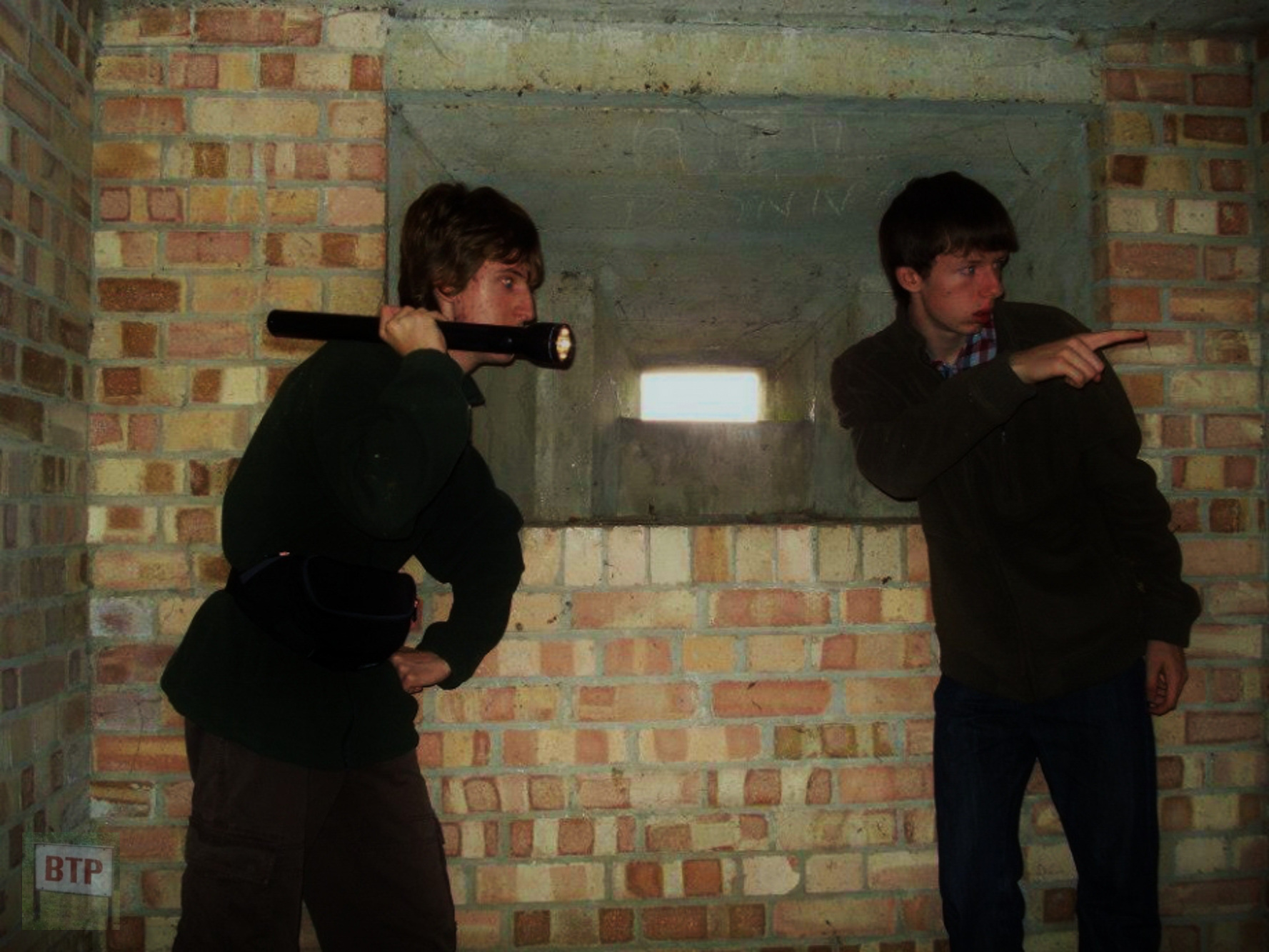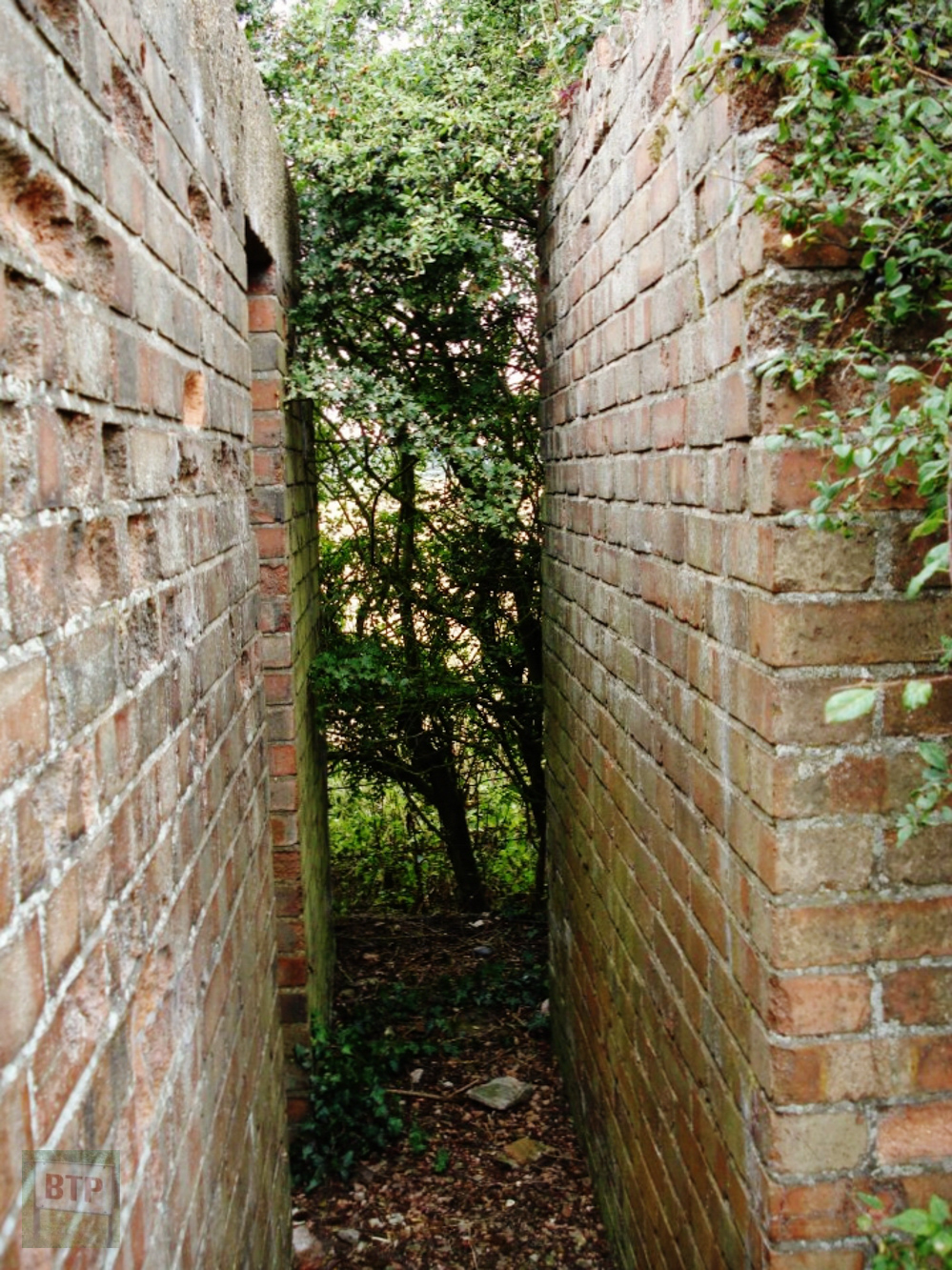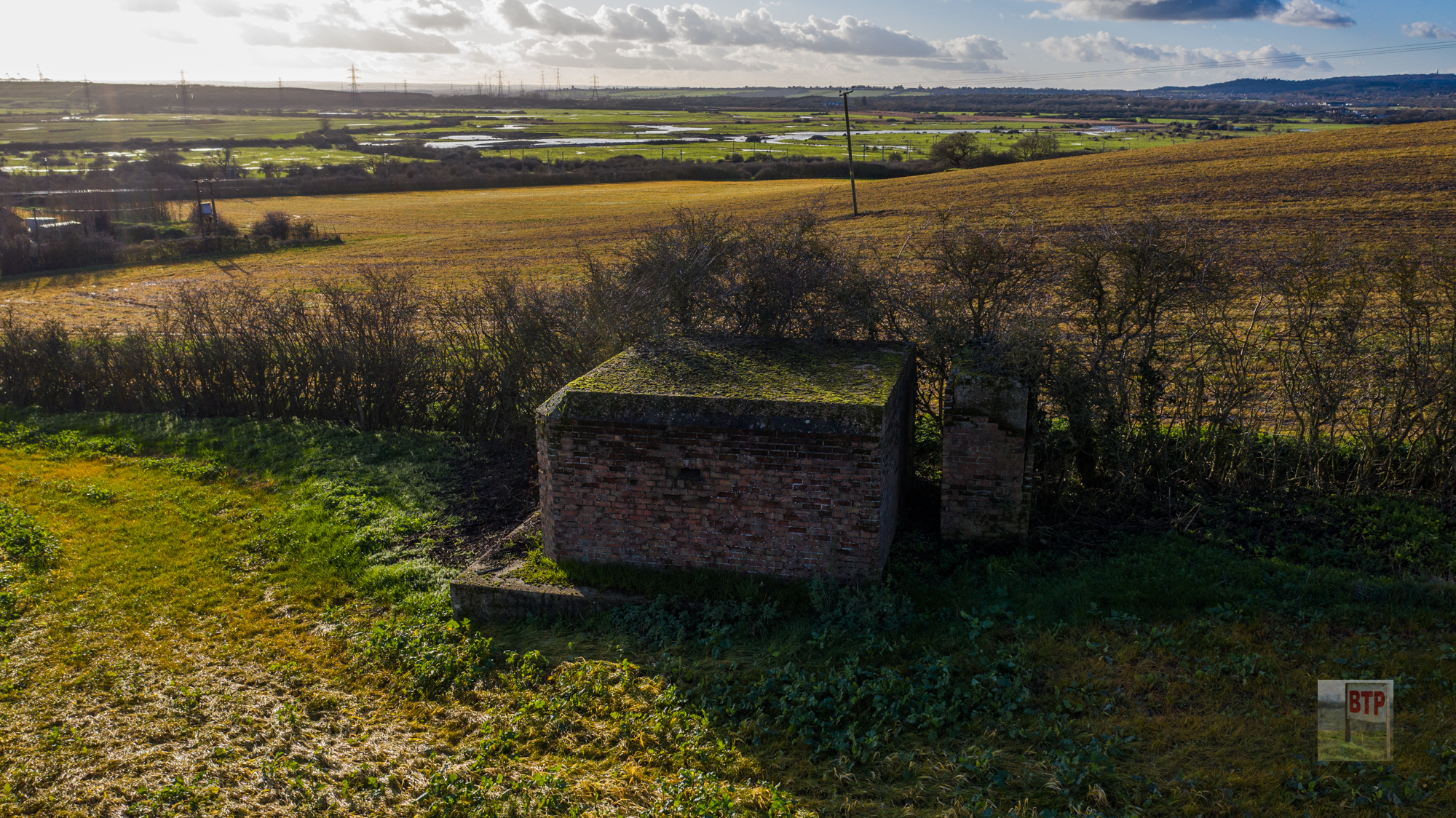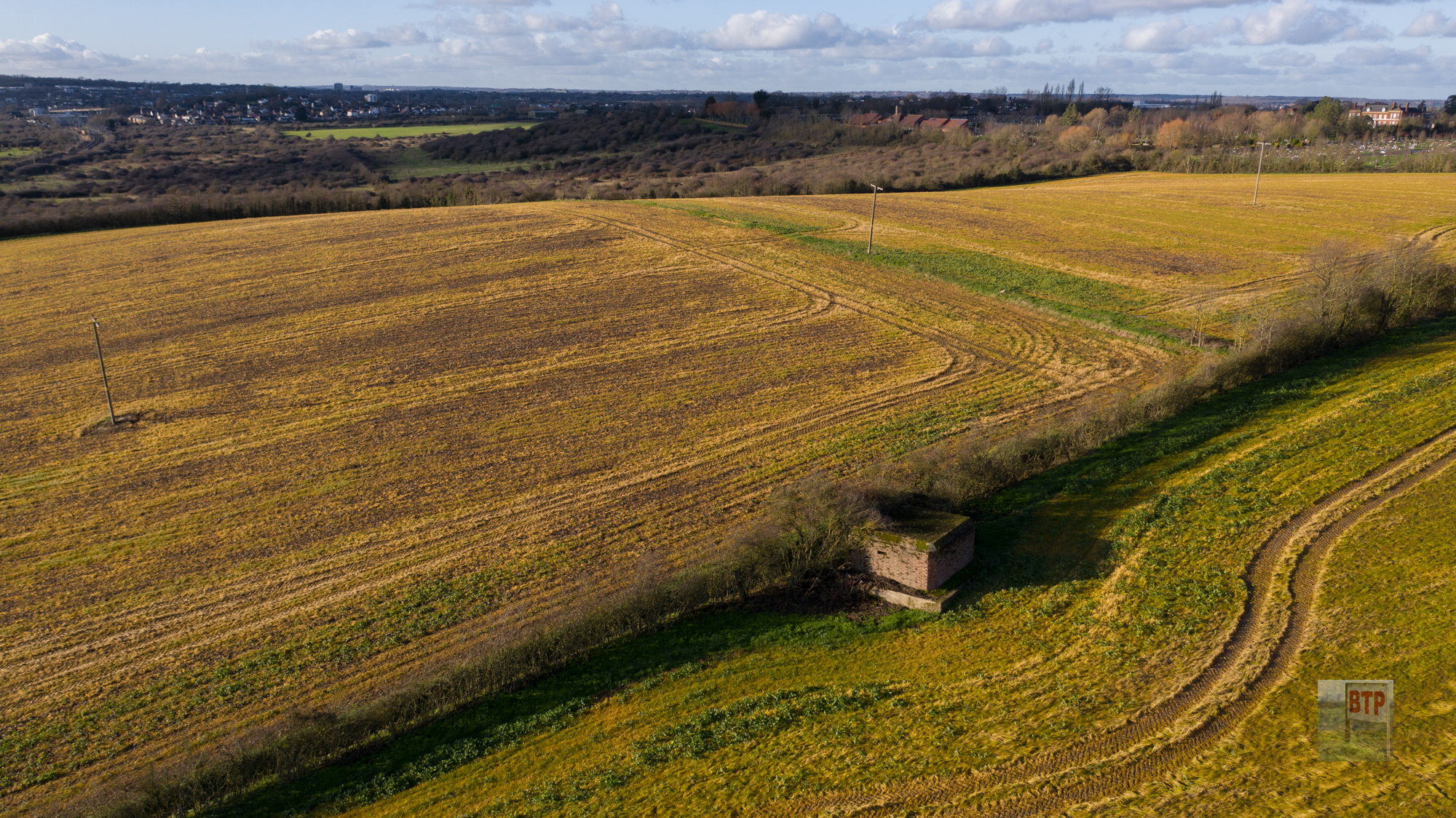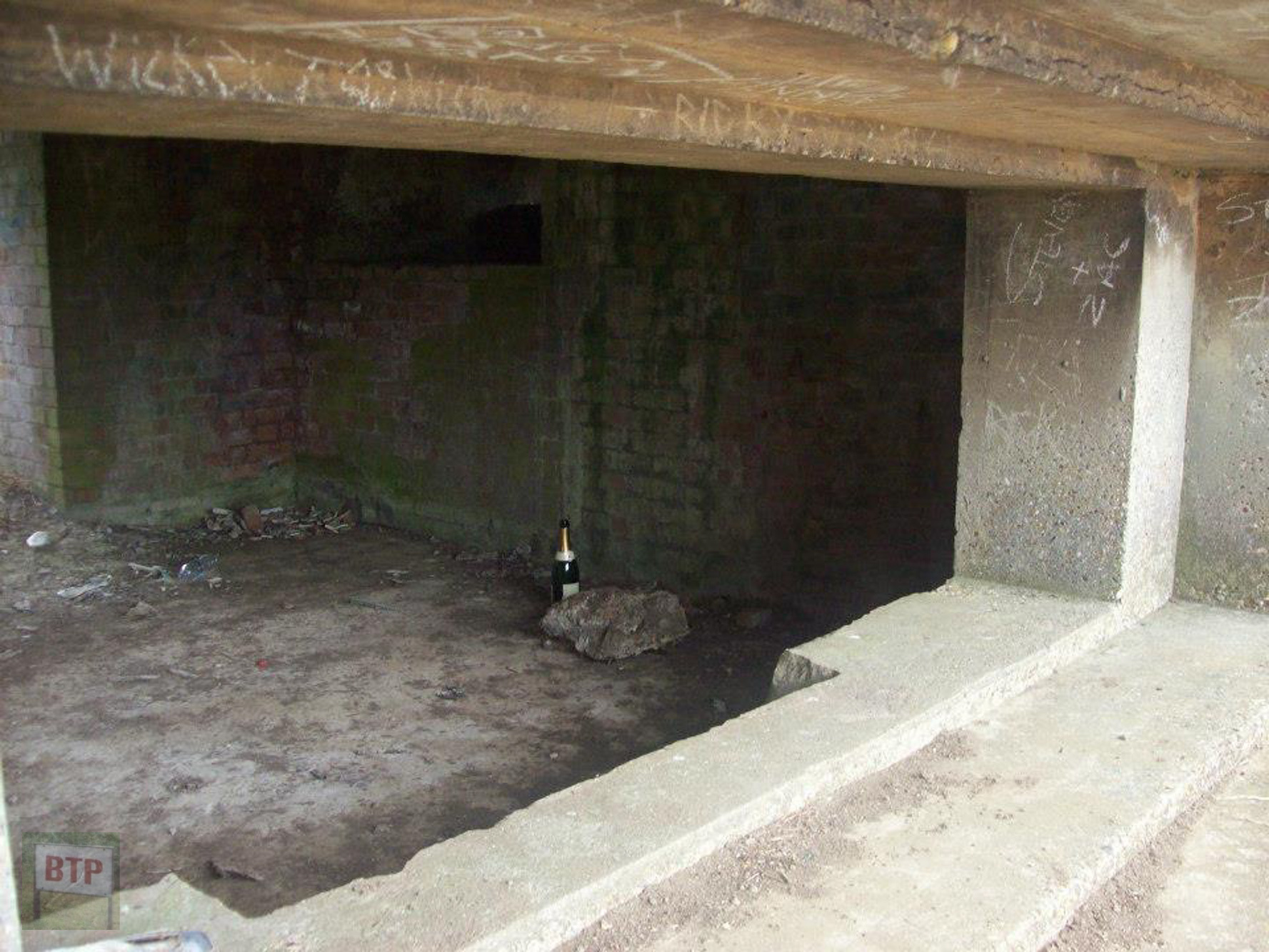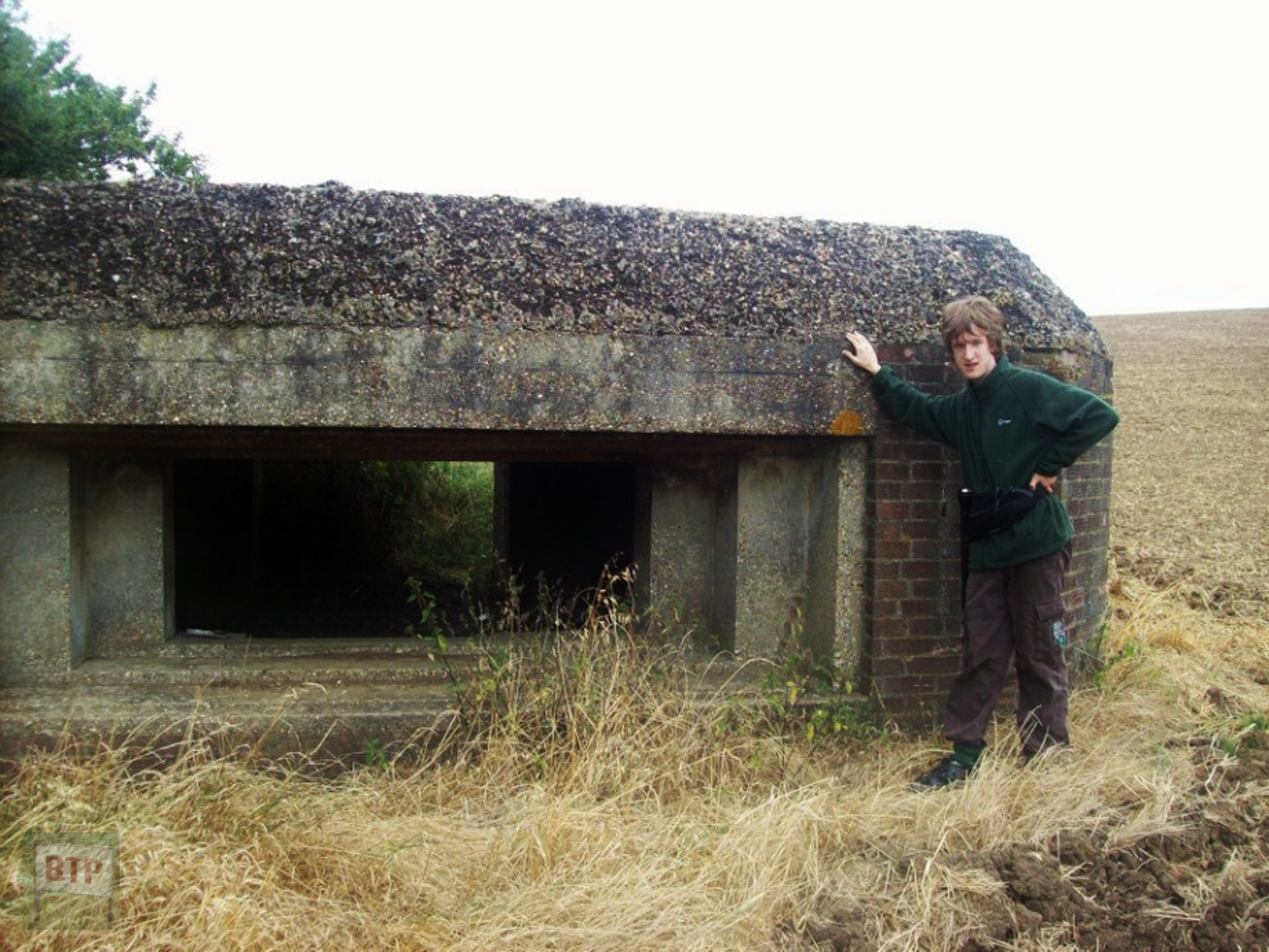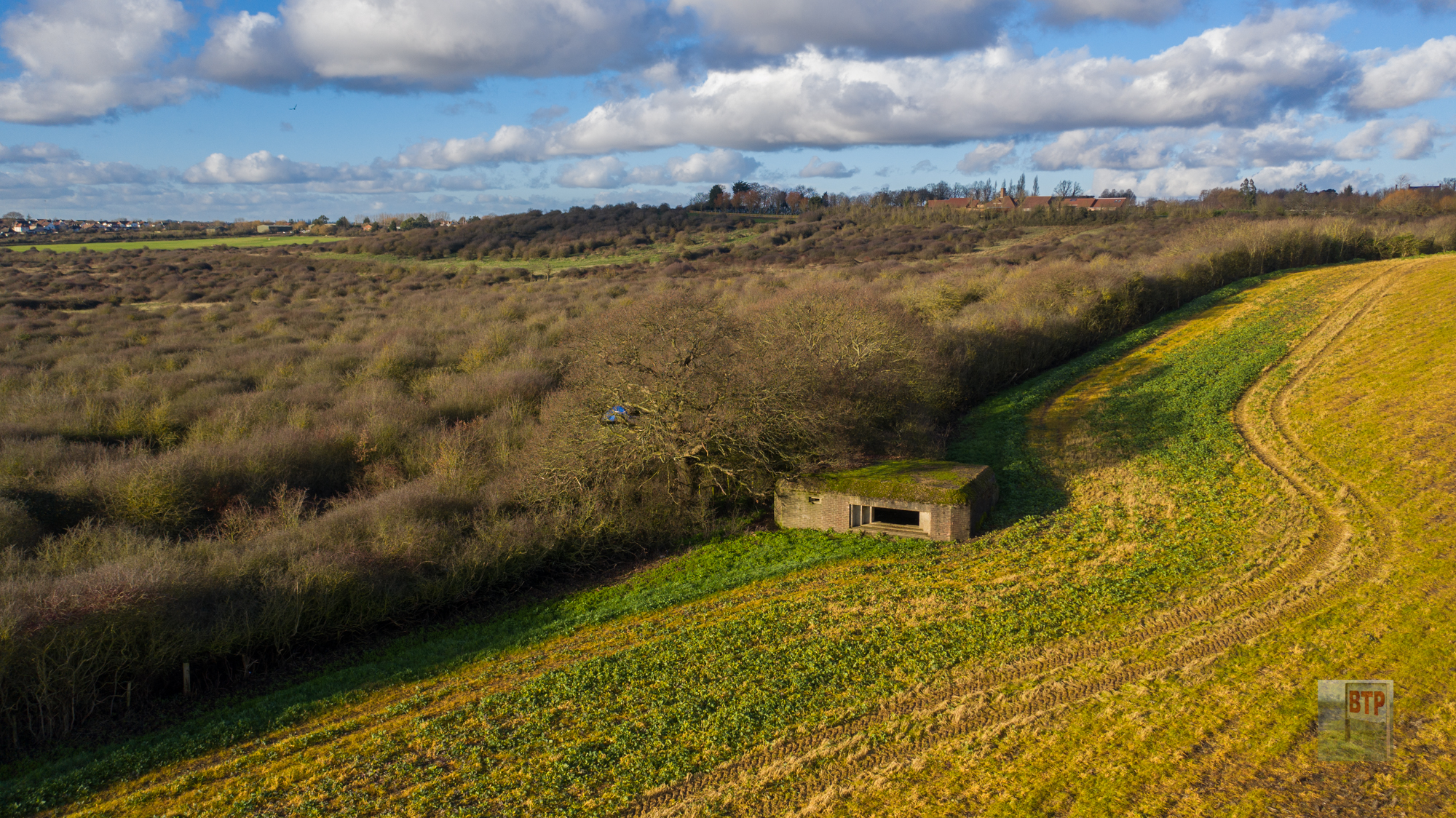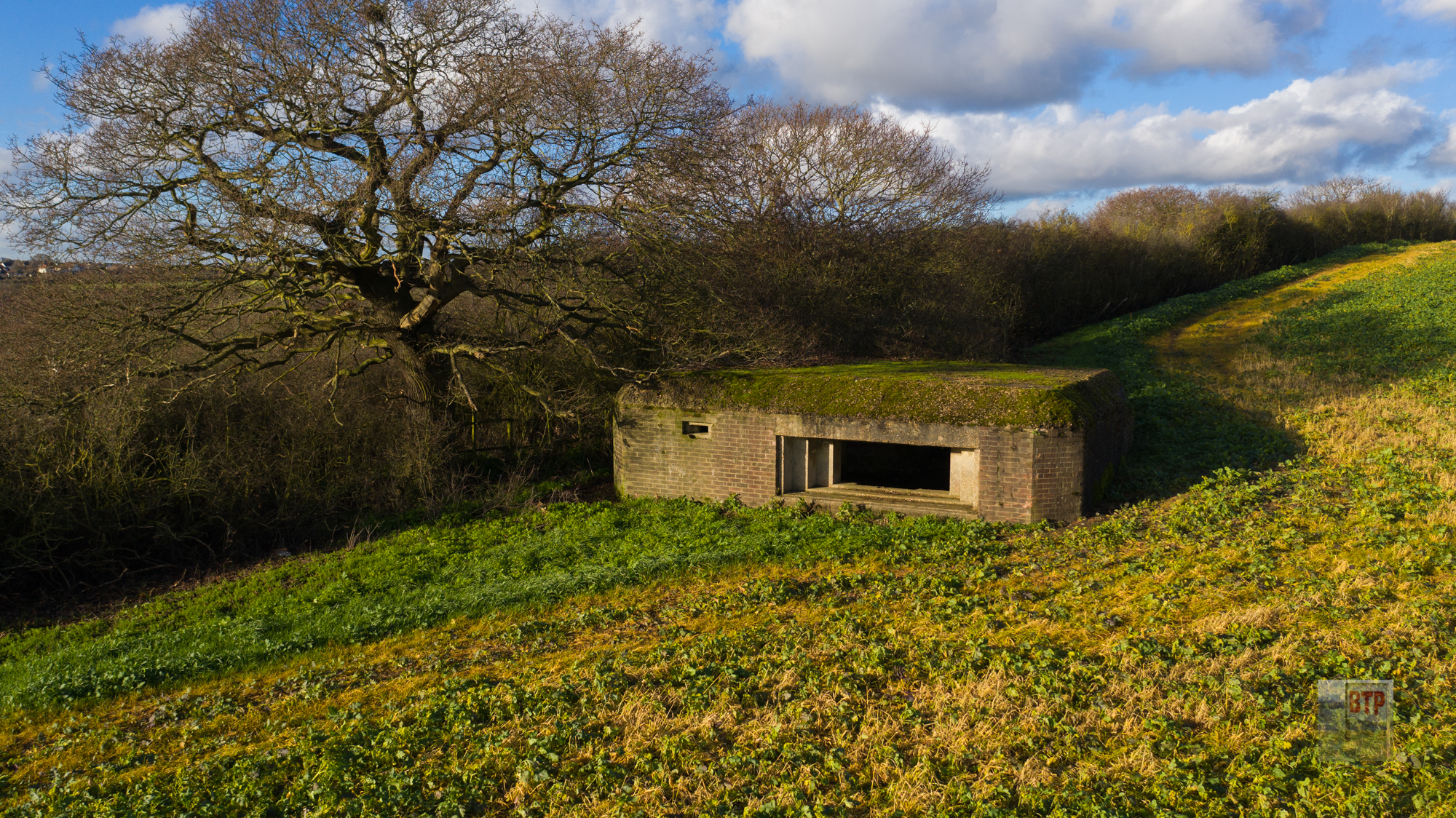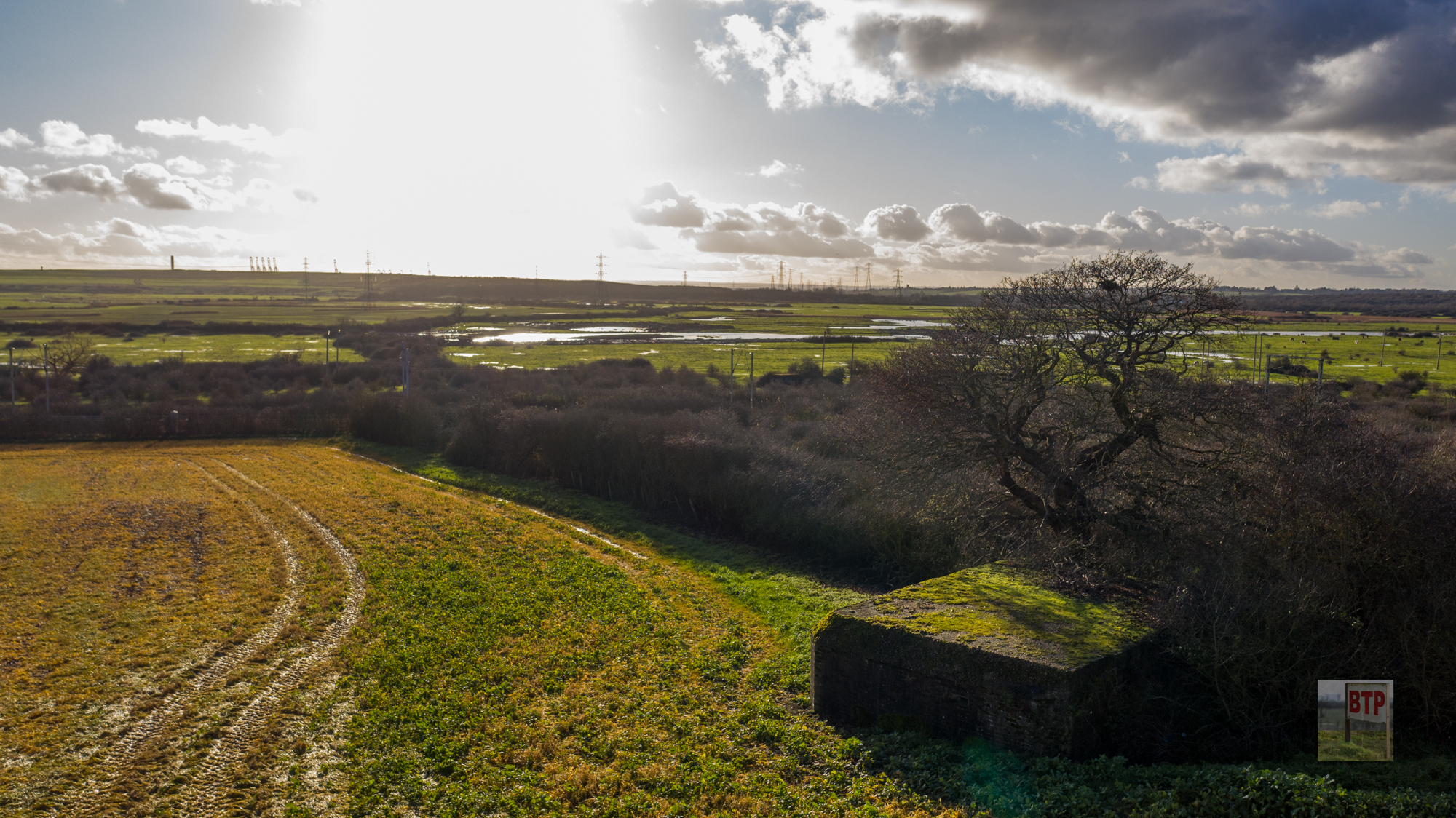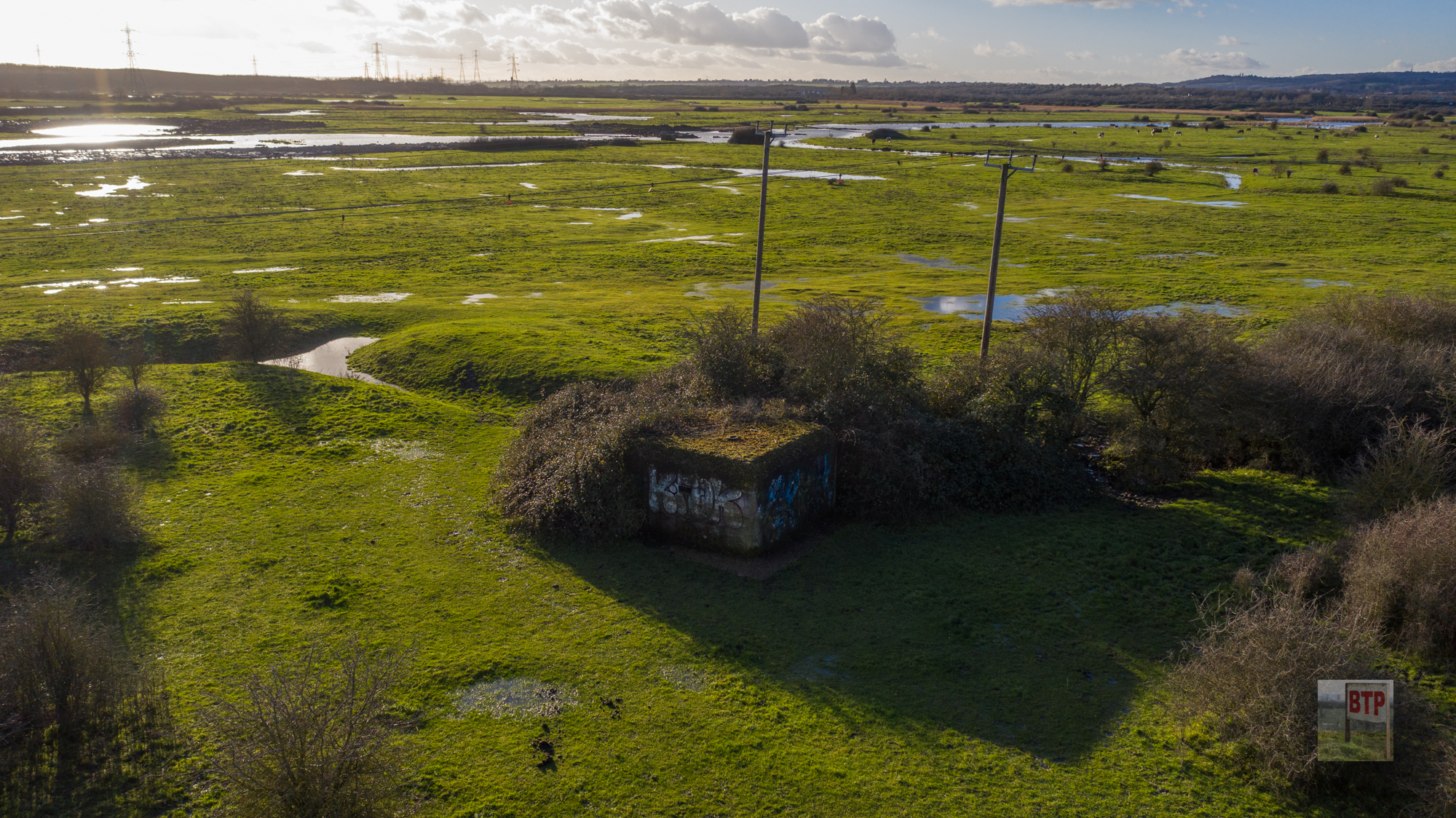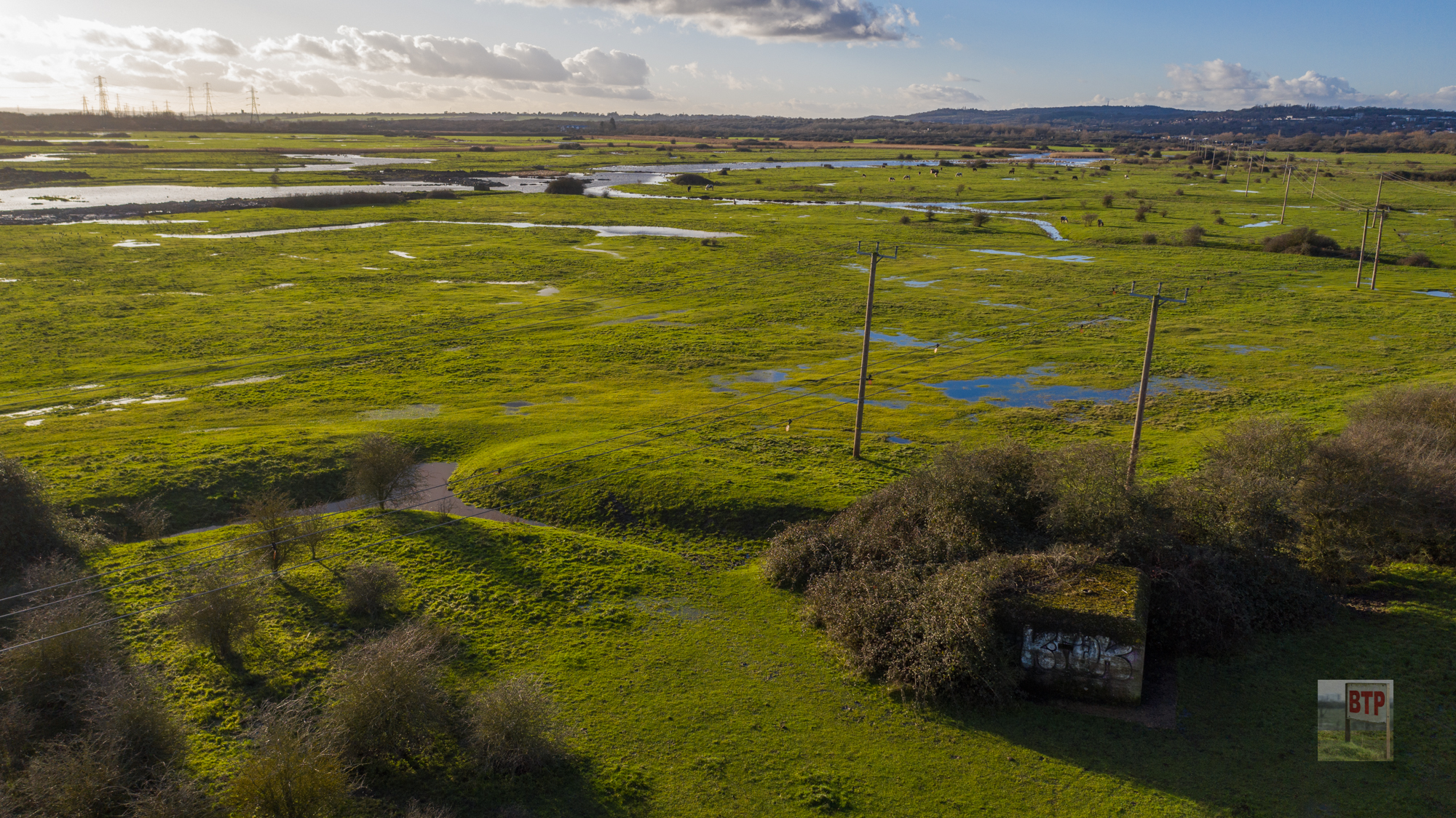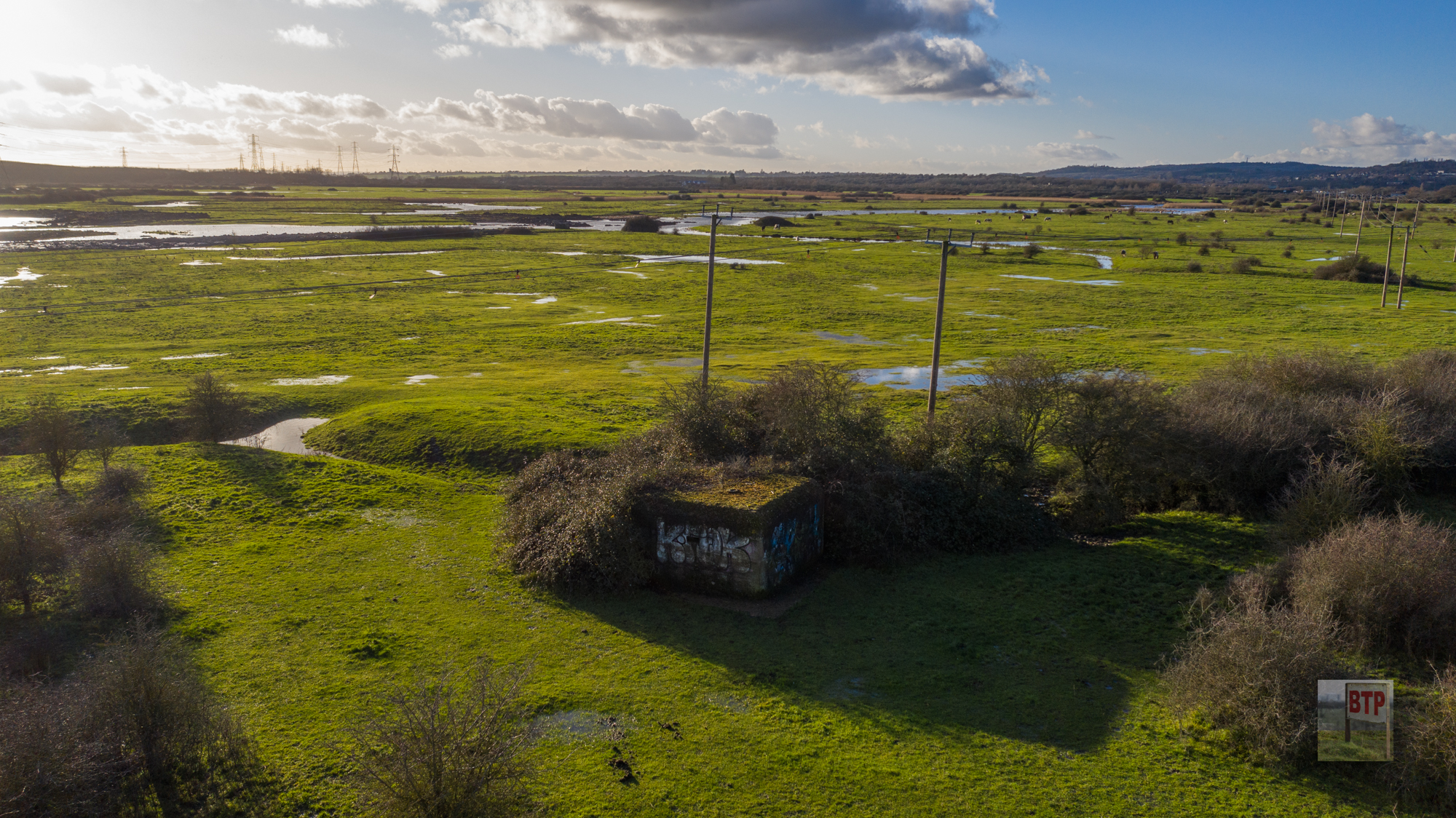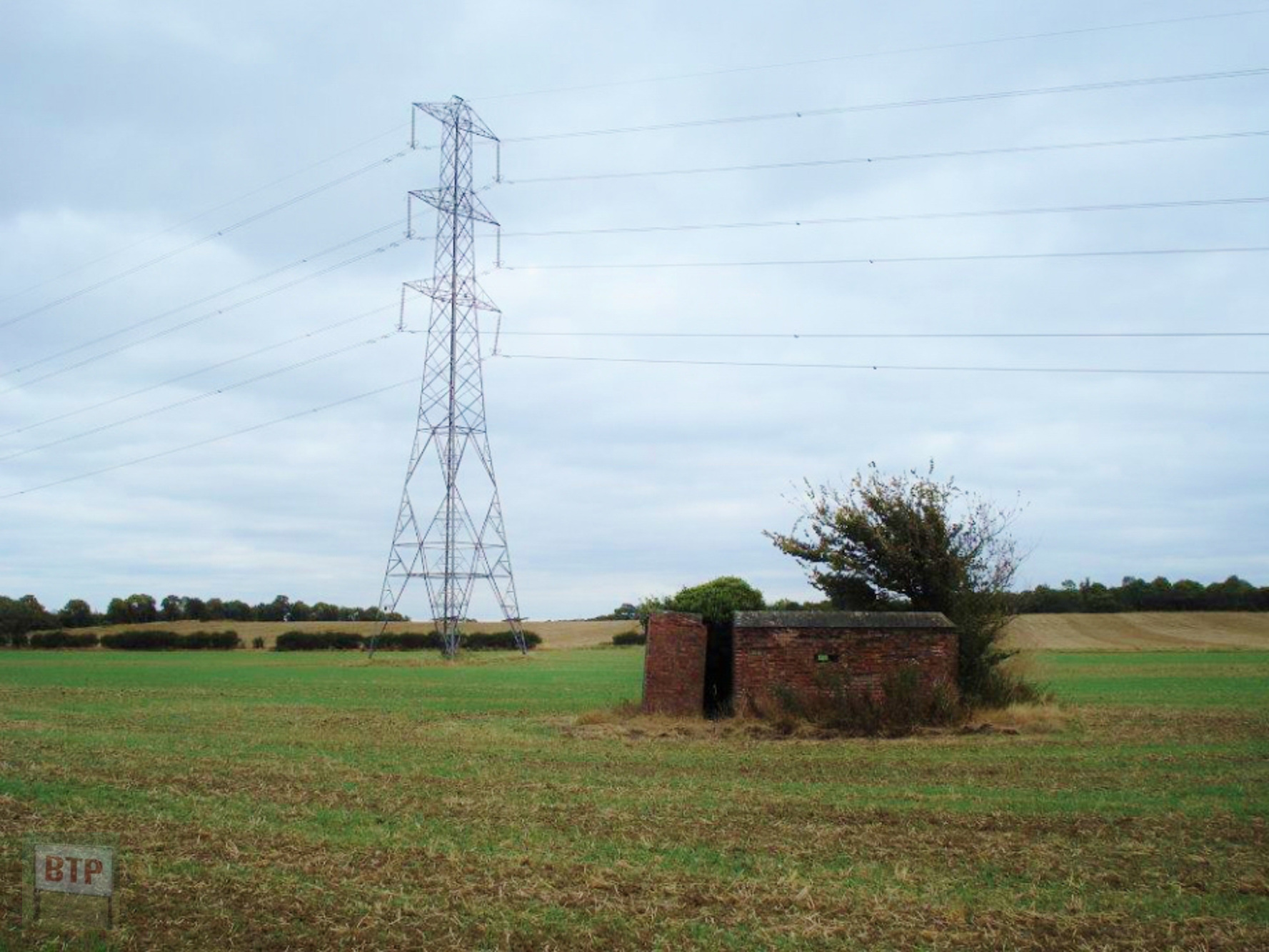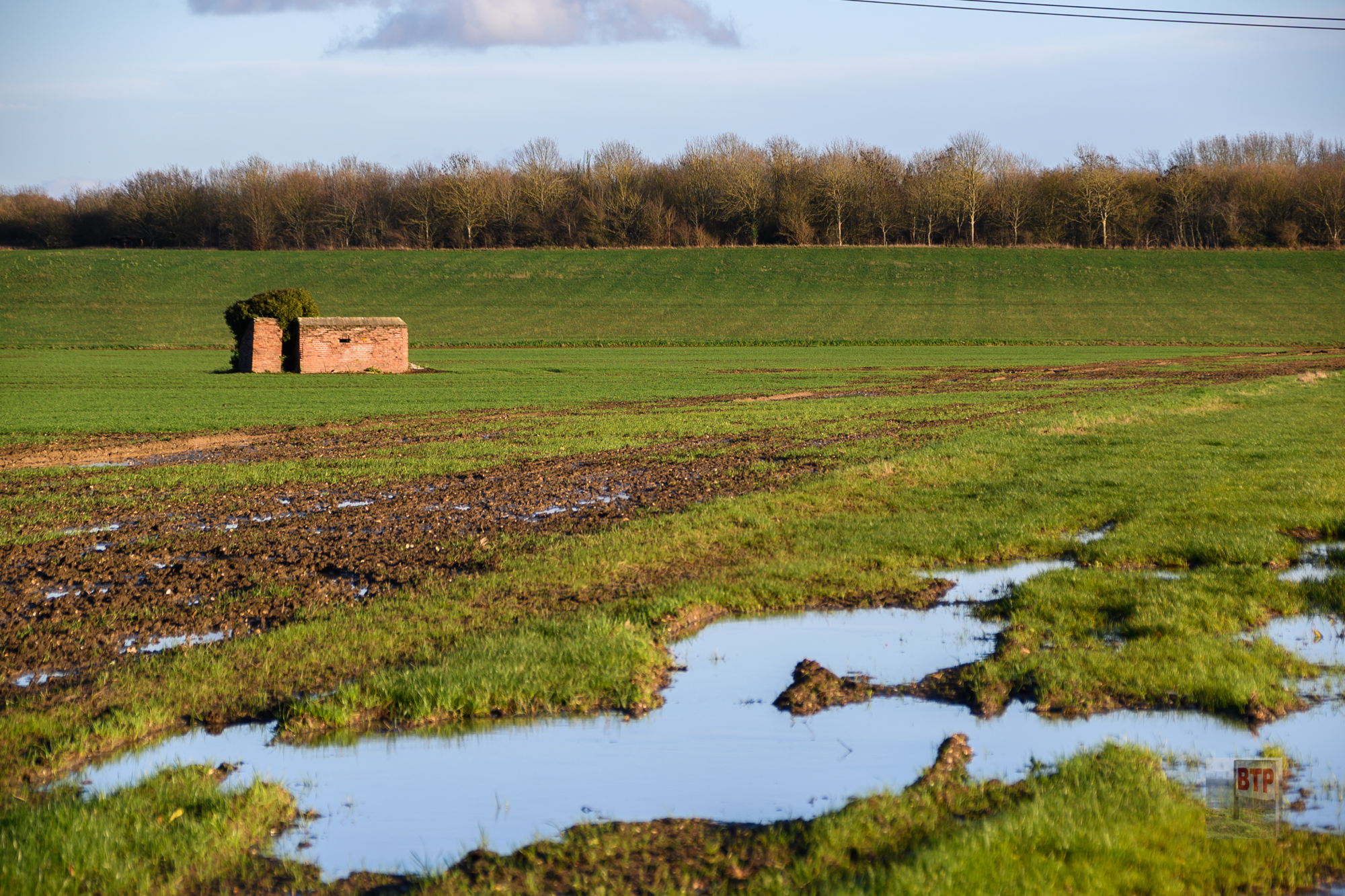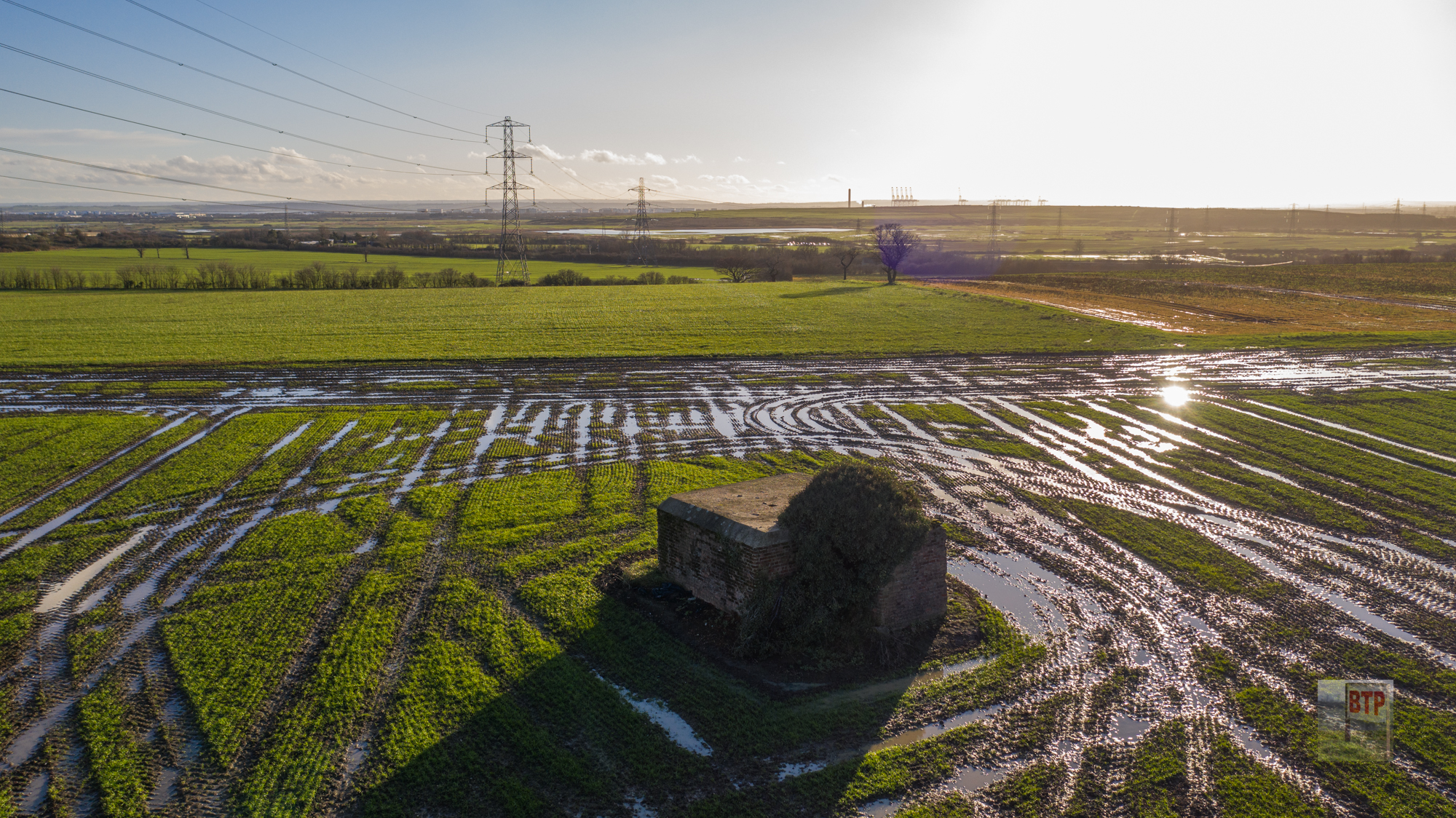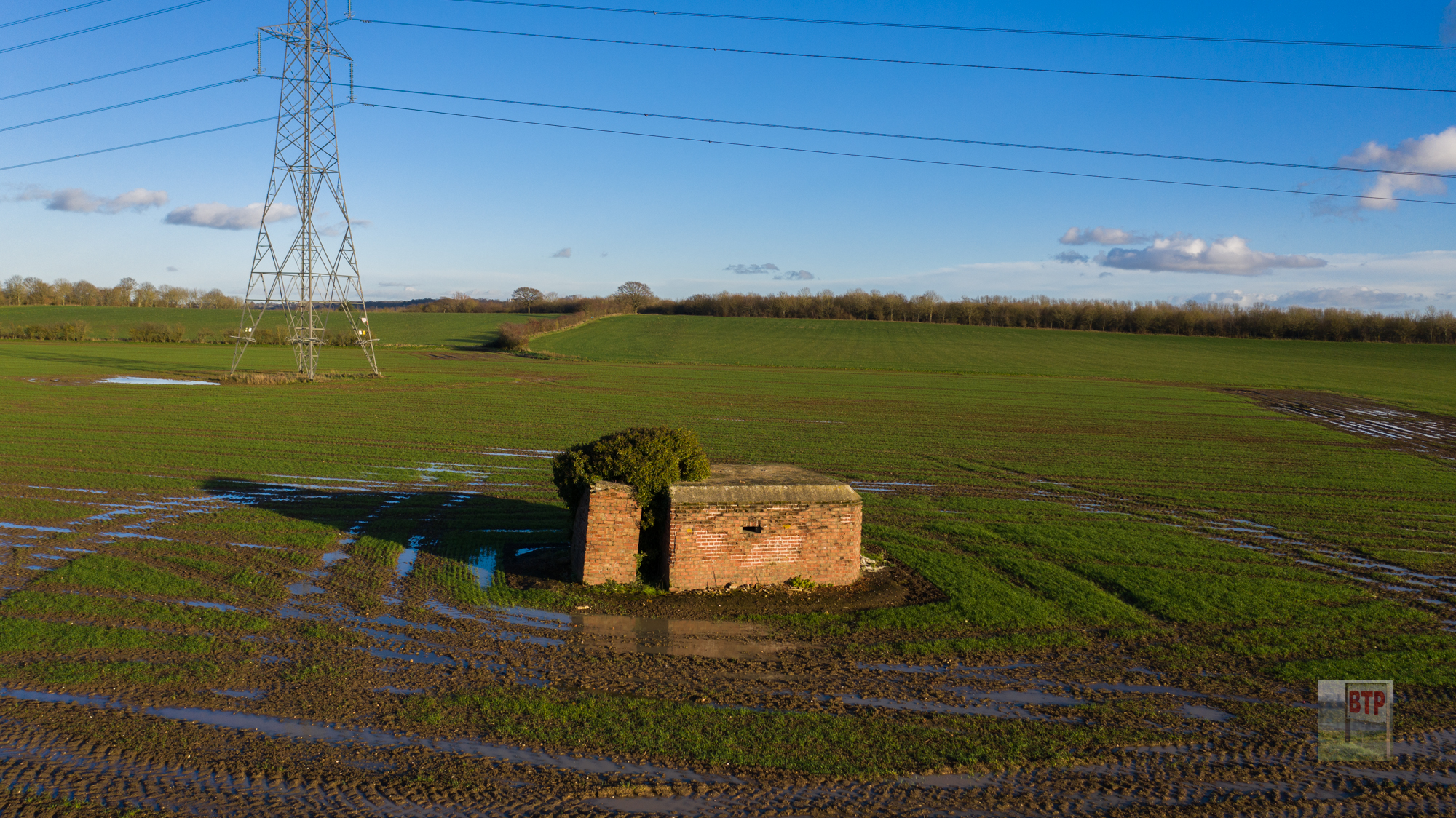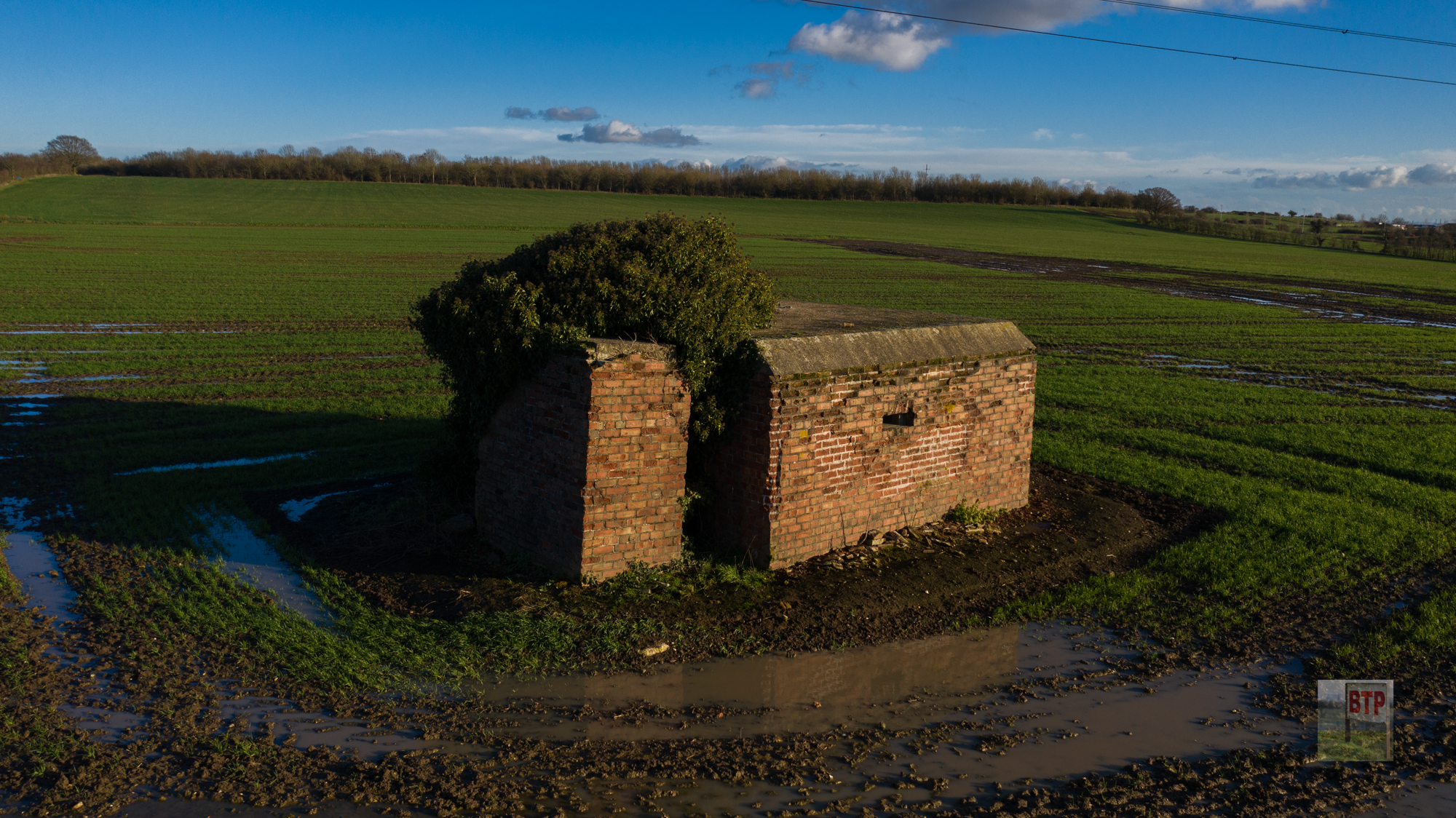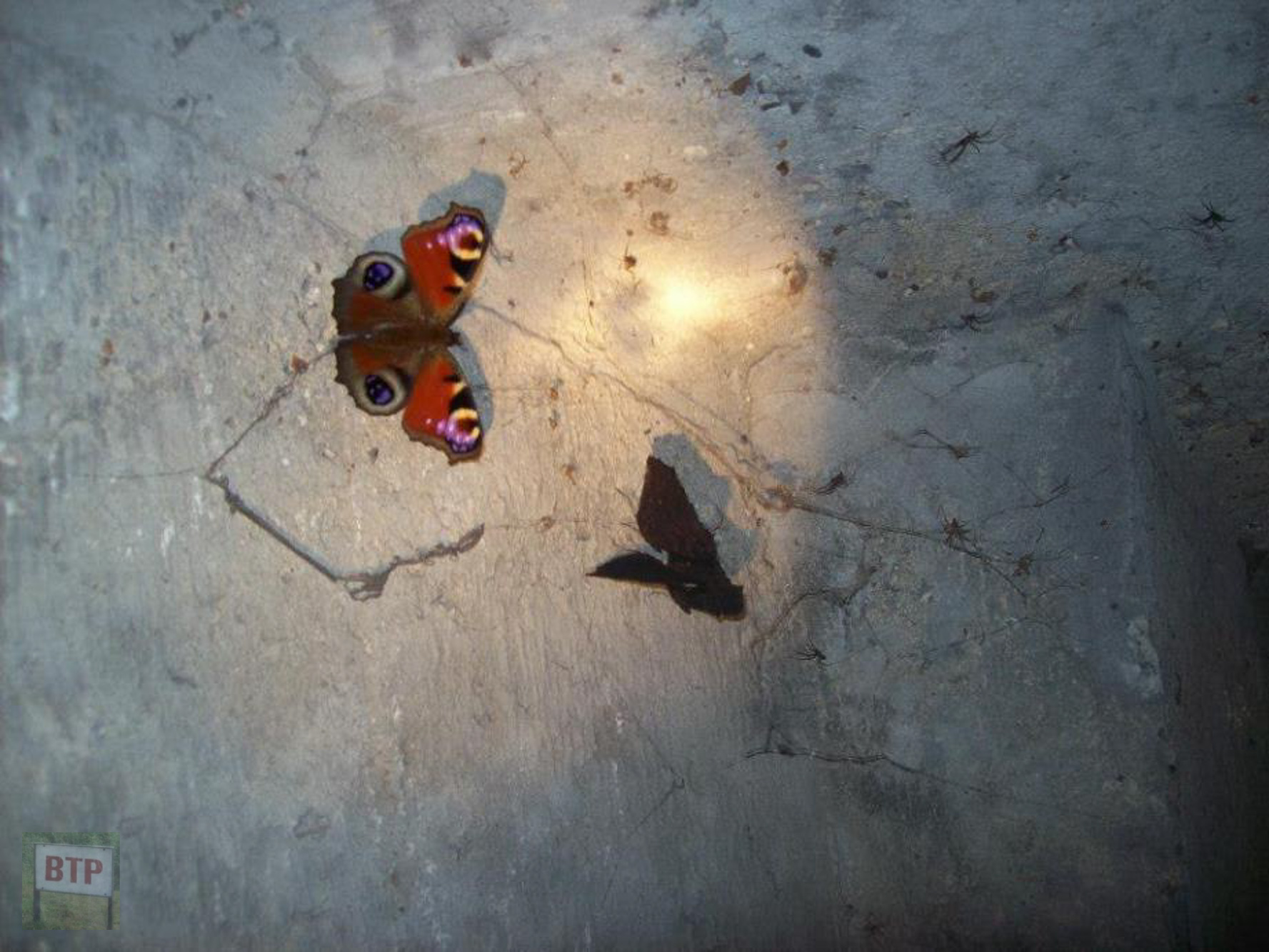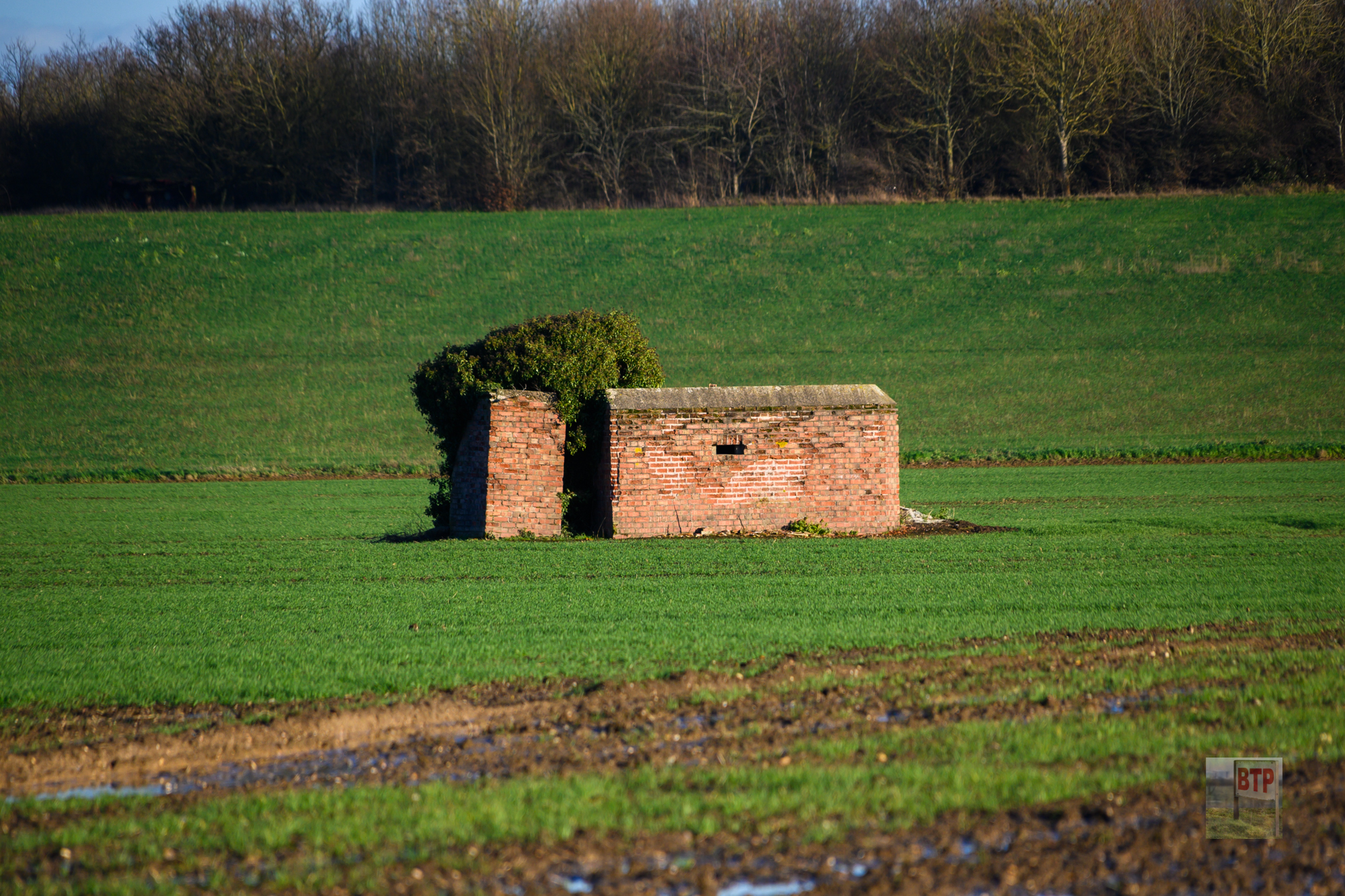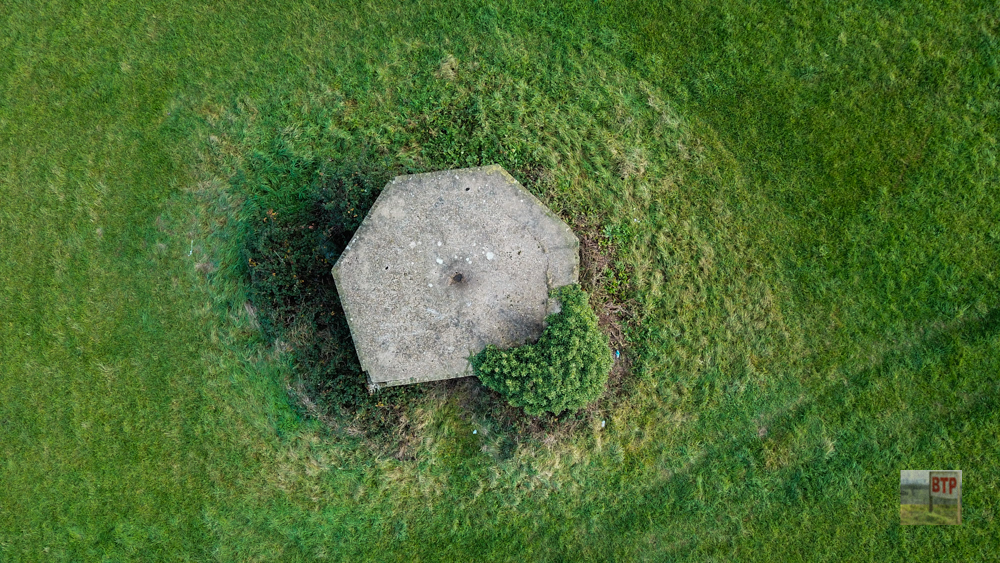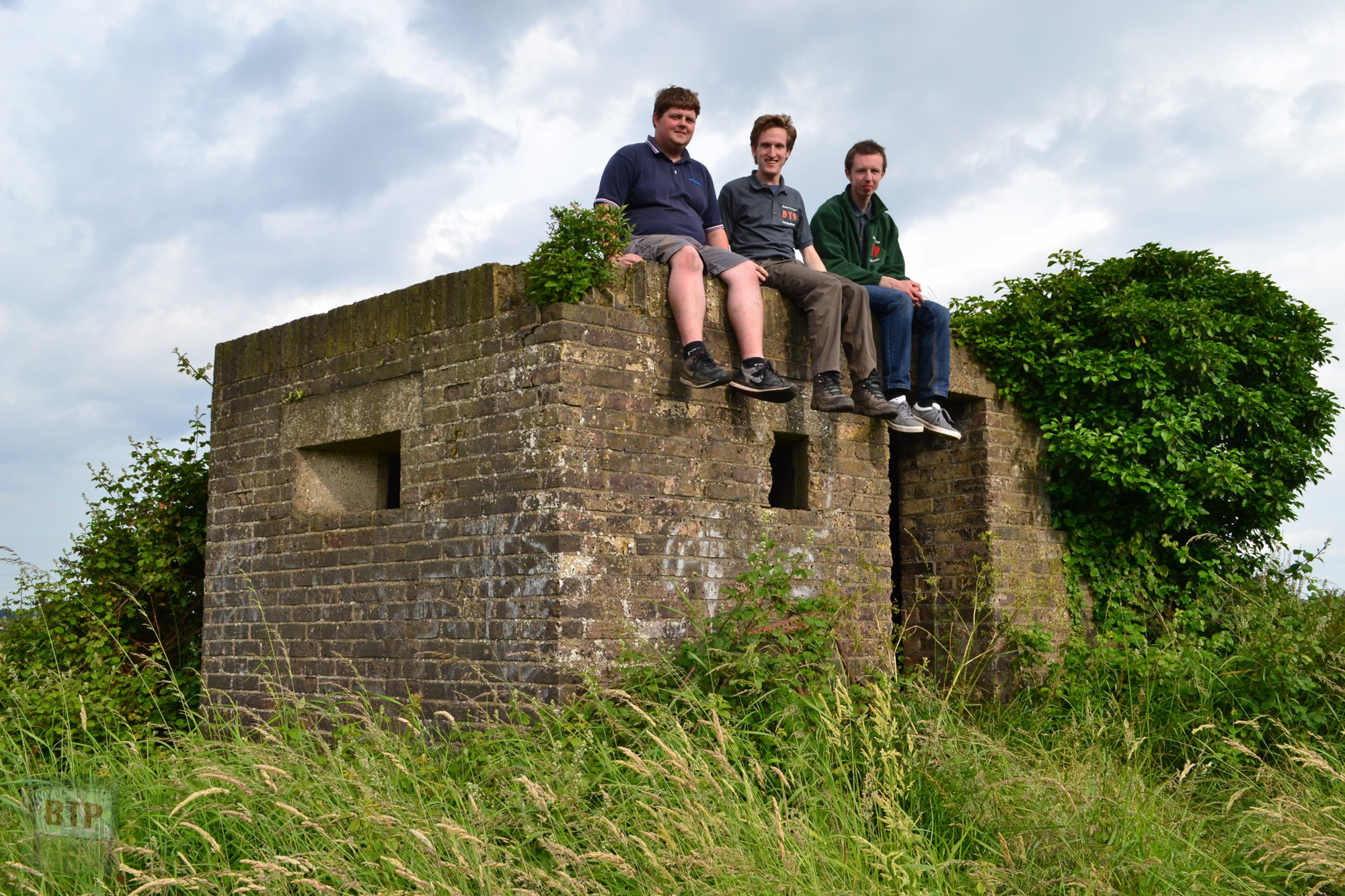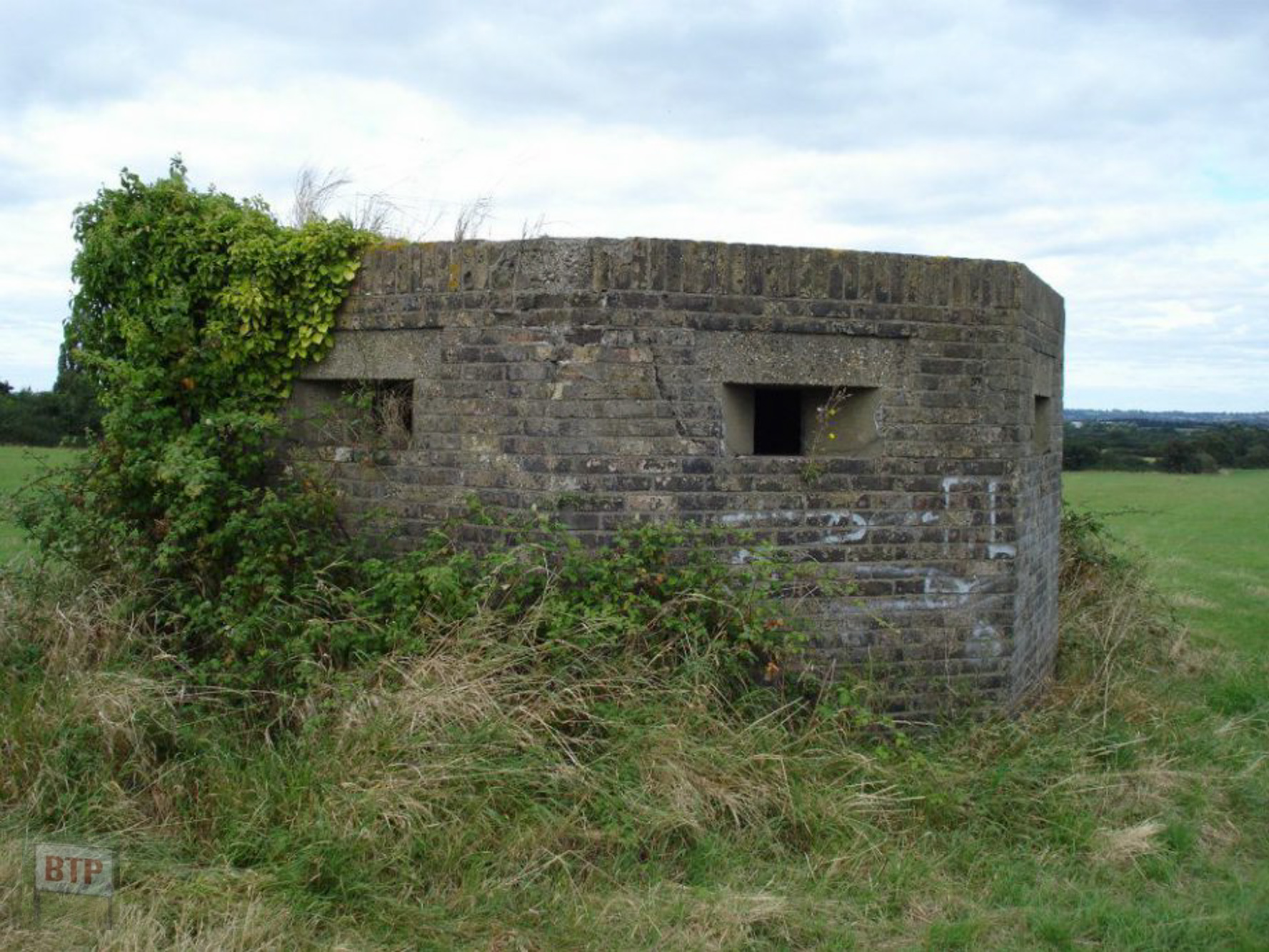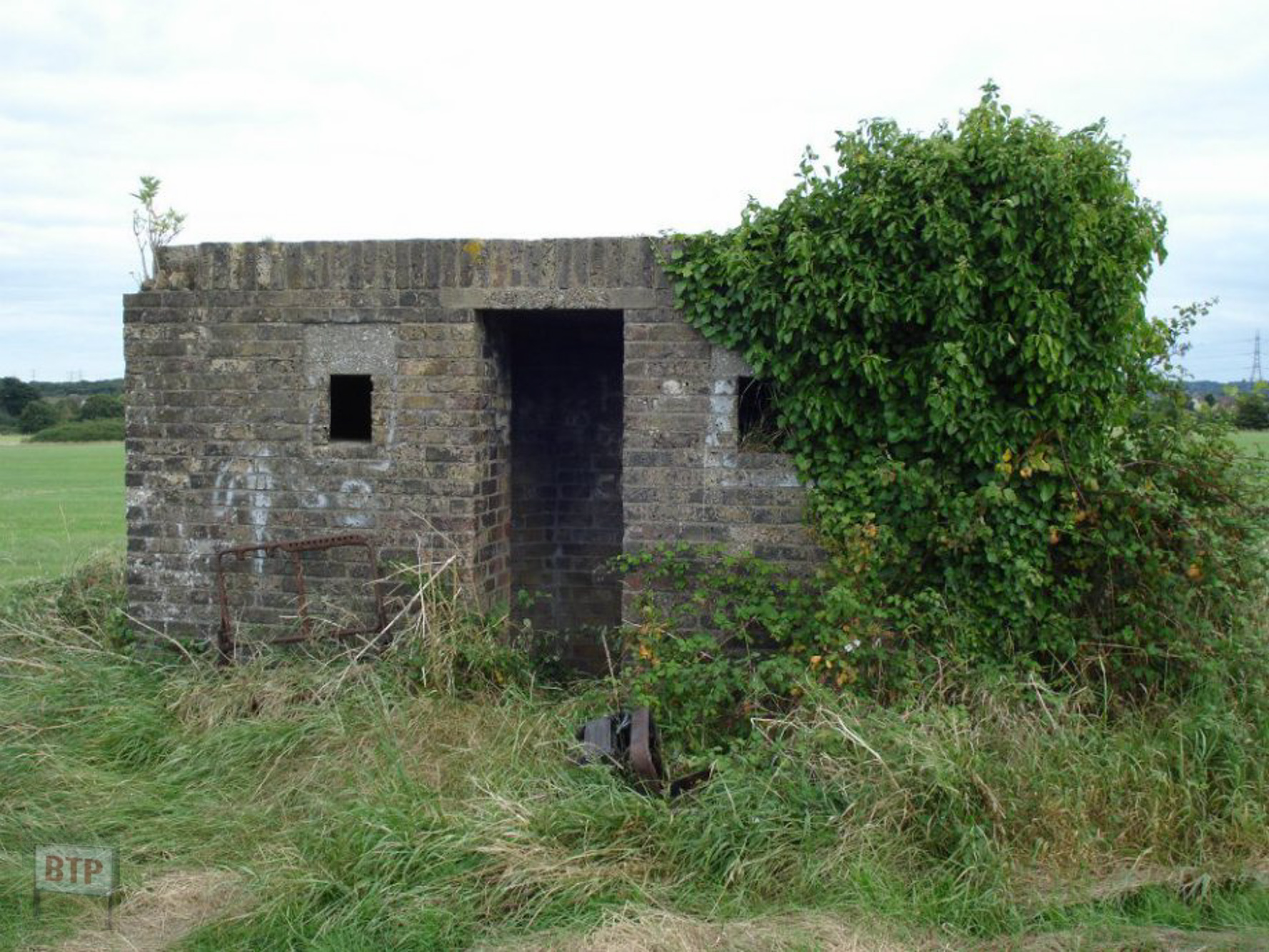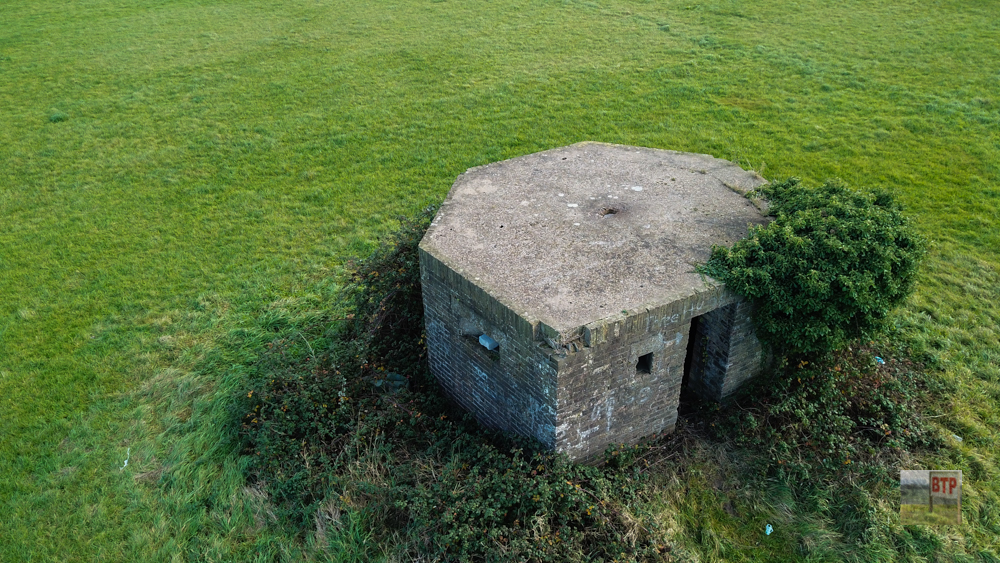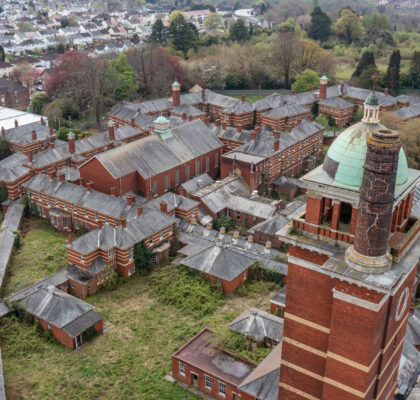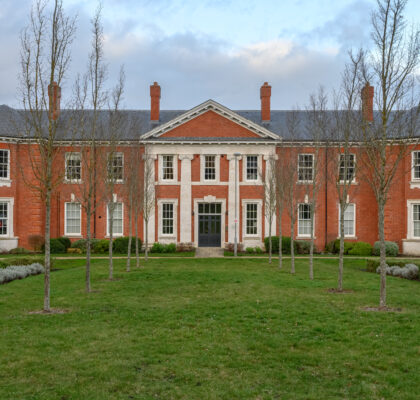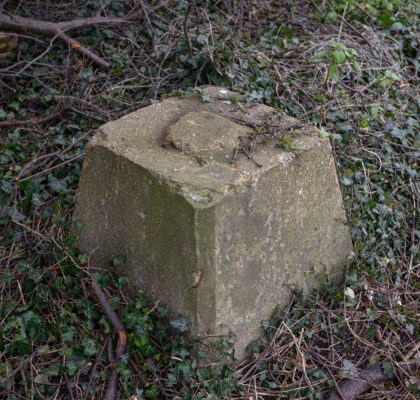First visited in the summer of 2012, Bowers Gifford is home to five surviving pillboxes which would have formed part of the GHQ defence line. Fifty of these lines were built and this particular one stretched from Canvey Island up to Colchester and would have been the first line of defence for London. Around 400 pillboxes were built along this line alone, with roughly 100 still surviving. The name ‘pillbox’ comes from the cylindrical ones used on the Western Front in the Great War, named after the shape of contemporary pill-boxes, in which personal pills would be stored.
1. Type 26
The first field backed straight on to the main farm buildings, which for that reason contained a good-condition pillbox clearly kept well by the farmer, and from the inquisitive members of the public (except us of course!). It was mounted on a concrete platform, and was brick-faced due to the moulding process which would have used bricks rather than wooden strips (causes the lines in concrete ones from where the concrete seeps between cement). It was a Type 26 (square with four standard loop-holes) and features a blast-wall protecting the entrance. This one however didn’t have a loop on the entrance face of the pillbox, so only had three. It also featured an air-vent hole on-top through the ceiling to let out bad air produced from the firing of the guns inside.
2. Type 28
In the field adjacent, we found a large Type 28 pillbox. These pillboxes differed from the rest as they were designed as fortified anti-tank positions, with a large stepped loophole big enough to fit a 2-Pounder large gun, which was mounted with a shield across it’s front, and fired large 40mm (diameter of bullet) caliber rounds designed to pierce tank armour. It also features many standard loop holes for light-machine guns or rifles (there was a dividing wall in the pillbox which separated some normal loop-holes from the big gun loop-hole. Note how stepped-sides of loop-holes are to make incoming bullets deflect outwards and not inwards onto the crew. Sandbags would have been placed around the loop-hole to fill the space between it and the gun’s shield.
3. Type 26, Pitsea Marshes
This next pillbox was the opposite side of the railway line so was inaccessible to us, however or drone managed to capture these photos of it. Alike the rest in the area, we would guess that it also has a blast wall however the bushes make it hard to determine.
4. Type 26
We then got back in the car following an easier public footpath along the south of the field, to which we then went back up the lane to opposite the farm’s main gate. In this field was another Type 26, with another blast wall. Although vines and the elements had started to get the better of it, we did go in and found tons of Peacock butterflies suspended around the ceiling. At first we thought these to be dead, but soon realized they must have gone in to feed from a salt or similar solution produced from the concrete in the presence of moisture. We also saved a butterfly from a spider’s web despite testing our courage in this pillbox, ridden with cobwebs and quite dark.
5. Type 24
The final pillbox was a Type 24 – almost like a flat-ended hexagon. It had six sides, one being longer than the rest (containing the entrance with two pistol loops either side), with the other smaller sides having one regular loop hole in each. This was much further back up along the main road, to the north of it, in a public park. It featured a wall in the middle to stop explosions killing all the crew inside, instead just the ones in front of the wall.

